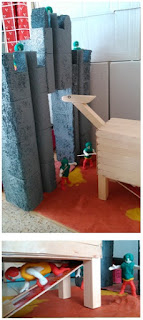Your new task is about creating an infogrpahic but, first
of all, what is an infographic?
Information graphics or infographics are graphic visual representations of information, data
or knowledge intended to present complex information quickly and clearly. They
can improve cognition by utilizing graphics to enhance the human visual
system’s ability to see patterns and trends.
There are a wide variety of tools available that allow you
to create your own infographic. These free infographic creator
tools will allow you to generate an infographic very quickly, without the need
for a professional designer, and often in very high quality formats:
- CANVA - Allows you to create graphics of any size, and has a built in free
“infographics” art section designed specifically for this use.
- PIKTOCHART - Has over 100 free themes available and more than 1000 images.
- INFOGR.AM - Has 30 free themes and allows interactive, embeddable infographics to be
created on the fly.
- If you
prefer something more familiar to you, you can download this archive with freepower point templates.
However, having
the tools to make your own infographic is only one piece of the puzzle. To make an infographic yourself,
you will also need to determine what your topic will be, what data you want to
present, how you will make that data interesting, and what you want your
viewers to ultimately learn from the graphic when they finish viewing it.
Infographics
are about more than looking good and attracting lots of views and links. If your infographic does not
present data in an engaging way – or your data is not worth learning – you may
find that your campaign is unsuccessful. So before you start designing, do some
research.
In your
case, each team will create an infographic about one climate. You should offer
a good visual explanation about its location in the world, characteristics
(temperatures, preciptation... A good idea would be include a climogranm) and
the landscapes linked to it.
Besides
being visually attractive, your infographic should be informative and complete
from an educational point of view.
When
finish, sent the work as an attached file to blogeducativo08@gmail.com. You can
be also asked to give an oral explanation at class.
As usual, this work is mandatory and will be part of the
score at the end of the term. If you fail to finish it, do it out of date (10 June), or
just copy, the mark will be a 0 for this work.
Good luck!

























